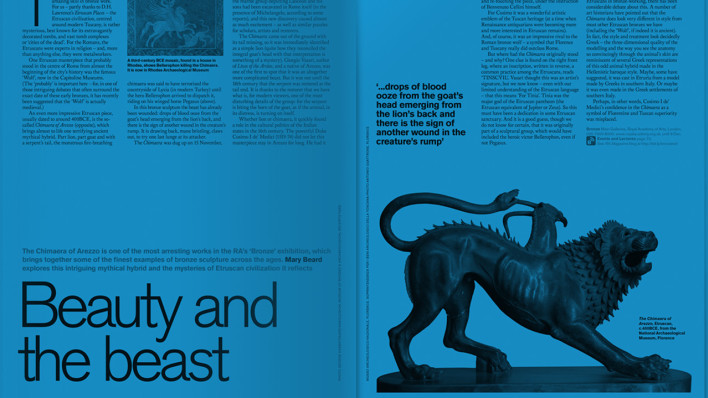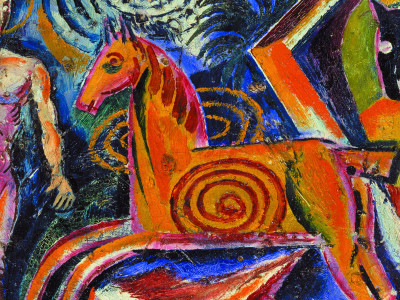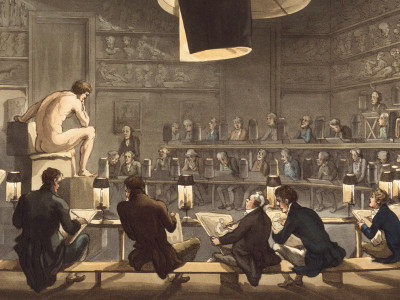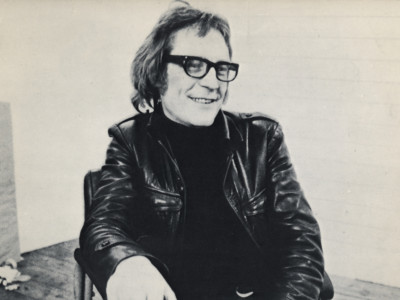
The poetry of paint: an interview with Etel Adnan
By Anna Coatman
Published on 1 June 2016
For Etel Adnan, art world success came late – in her eighties. Anna Coatman met the writer and painter in Paris ahead of a major show in London.
From the Summer 2016 issue of RA Magazine, issued quarterly to Friends of the RA.
Etel Adnan opens the door to her Paris apartment before I have the chance to knock. The grand scale of the door frame makes the nonagenarian artist and writer appear even tinier than she actually is. But her diminutive stature belies her impressive reputation, and I am nervous. I have no need to be – she grins, clasps my forearm and pulls me into her home.
It is, gratifyingly, exactly the kind of place I imagined her to have: windows with views onto the streets of St Germain, parquet floors, faded Persian rugs, books and paintings everywhere. I force myself to stop staring and hand over the cakes I have brought, as an offering. "From England?" she asks, impressed. No, I admit, they are from the patisserie around the corner. Still, she says, "certainly they won’t be wasted!"
We settle down in the living room and Adnan begins to tell me about her life and work, in a voice richly textured with accents from the many different places she has called home. She was born in Beirut, in 1925, to a Greek mother and Syrian father, and went on to study philosophy in Paris before continuing her education in the United States. From 1958 she lived and taught philosophy in California, until she moved back to Lebanon in 1972, where she stayed for five years. After that, she alternated between California and Paris, eventually settling in the French capital. She speaks five languages – as evidenced when she answers the phone in several of them, over the course of the afternoon.
Having already established herself as an important poet, academic and essayist, Adnan began painting at the age of 34. "Painting just happened," she explains. "I didn’t know I would become a painter; I didn’t go to art school. When I was teaching the philosophy of art I had access to artists and materials, so I began to paint, and people I trusted liked what I did." If painting came relatively late to Adnan, the kind of recognition she now has as a painter came even later, when she was already in her eighties.

A turning point came in 2010 when the Galerie Sfeir-Semler, with spaces in Hamburg and Beirut, asked her to show with them. Two years later, her work was the highlight of the dOCUMENTA (13) art fair, and since then she has had a string of solo shows in high profile venues, including White Cube. The next will be at the Serpentine Sackler in London this summer.
Adnan creates, among many other things, small-scale, colourful, semi-abstract landscape paintings and tapestries, and foldout illustrated books known as leporellos, as well as large-scale public murals. "When I do a painting it may be like a landscape, but there is more to it," she continues. "You don’t recognise what landscape it is, as it is not a particular landscape – it is maybe a memory of a particular landscape. I lived in California for most of my life and I loved it, so my paintings are homages to those memories, to the beauty of them."
She paints, primarily, because she enjoys it. "I love the pleasure of painting and why shouldn’t I be happy? I think that is why people sometimes don’t like artists: they see that they are happier than they are themselves. In fact they are not more happy – in their everyday life they may have big tragedies, but the act of making art is happy. It is a liberating gesture." Happiness, for Adnan, is political. "Art has a political function in the sense that it brings something life-enhancing, a desire for life."
Reaching people beyond the exclusive coterie of the contemporary art world is important to Adnan, who feels ambivalent about suddenly becoming one of its rising stars. The art market, for one thing, dismays her: "Some collectors don’t even look at the art they own. It is not about art any more, it is about ego – 'I own ten Picassos'. So what! I would rather have one reproduction and look at it than ten sitting in the bank." She also regrets that she cannot make the most of her position, confessing, "I wish it had happened before, because I make money and you know I cannot spend it – I cannot go on aeroplanes, I cannot do many things. And it breaks my heart."
Her sadness, however, is short-lived. She brightens within seconds, countering, "On the other hand it’s good it did not happen before because I had peace of mind, and I stayed meditative about art. I am not against galleries – it is necessary for art to be shown and reach the public – but they have their own financial pressures. So they have to keep selling and the artist has to keep producing. I have not fallen into that trap. I do not think a real artist falls into that trap. They do what they have to do anyway."
For this reason, Adnan believes fervently in the importance of public art. "We emphasise too much galleries and shows, because art has become an industry," she argues. "We need public participation in art. With a small budget, a few artists can go into an ugly street and help the people who use that street to beautify it. They pay great attention to the beauty of Paris, for instance." She gestures to the window. "They do not pay attention to the ugliness, the visual poverty, of the suburbs. I am not saying this is the only reason for the trouble there, but it is one of the reasons, and it is a problem we can more easily answer than the others."
At the age of 91, Adnan has lived through many political earthquakes, but these have only made her more resolute in her conviction that "in times of trouble we need even more art and not less. It is not an extra, it is not superfluous, something marginal: it is something fundamental." She may have reservations about the art world, but there is no doubt the art world needs Etel Adnan.
Etel Adnan: The Weight of the World is at the Serpentine Sackler Gallery, London, until 11 September.
Anna Coatman (@AnnaCoatman) is Assistant Editor of RA Magazine

Enjoyed this article?
As well as free entry to all of our exhibitions, Friends of the RA enjoy one of Britain’s most respected art magazines, delivered directly to your door.
Why not join the club?
Related articles

Visions from Ukraine
19 June 2024

10 RA Schools stories through the centuries
16 May 2024

In memoriam: Mick Moon RA
1 May 2024